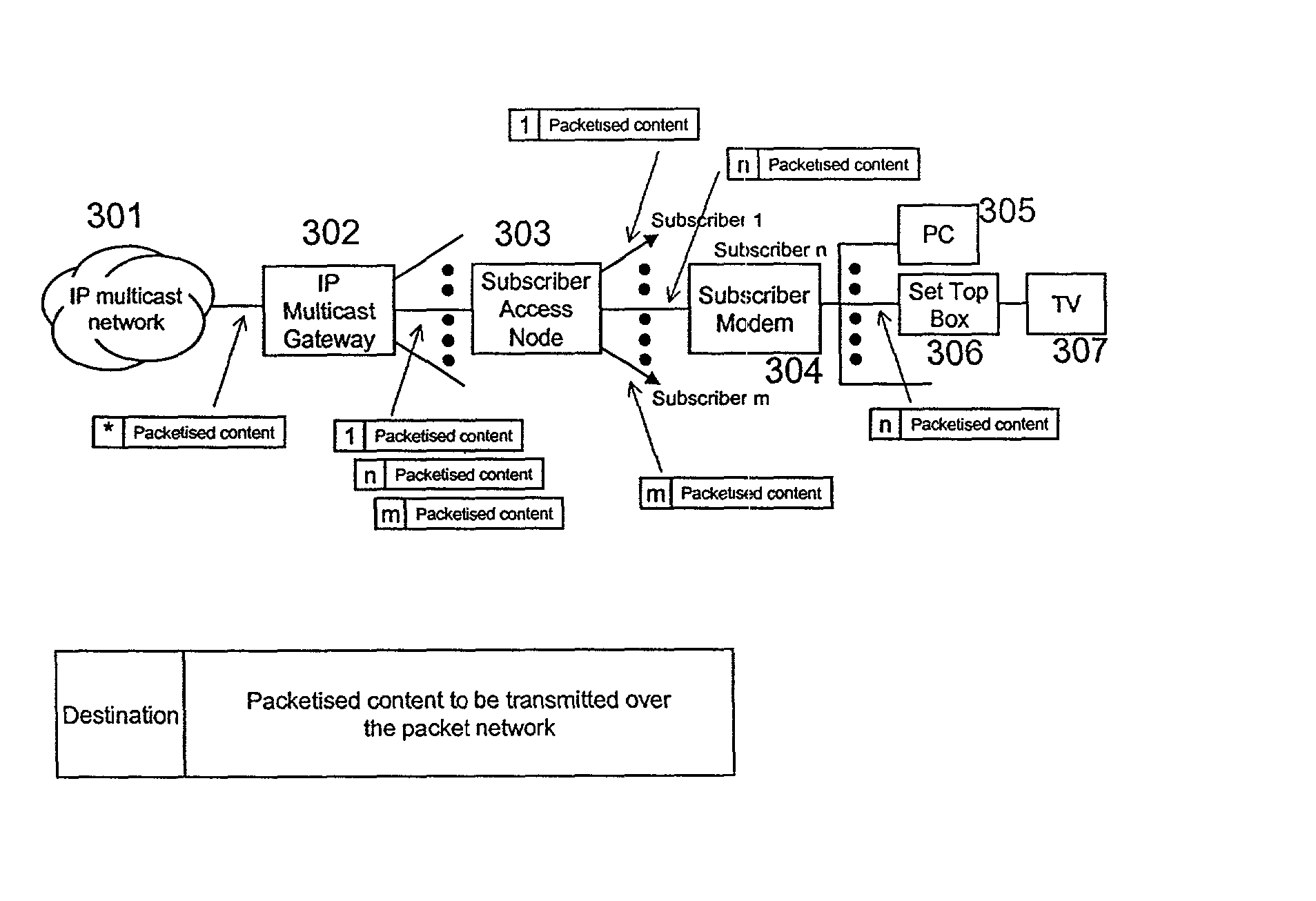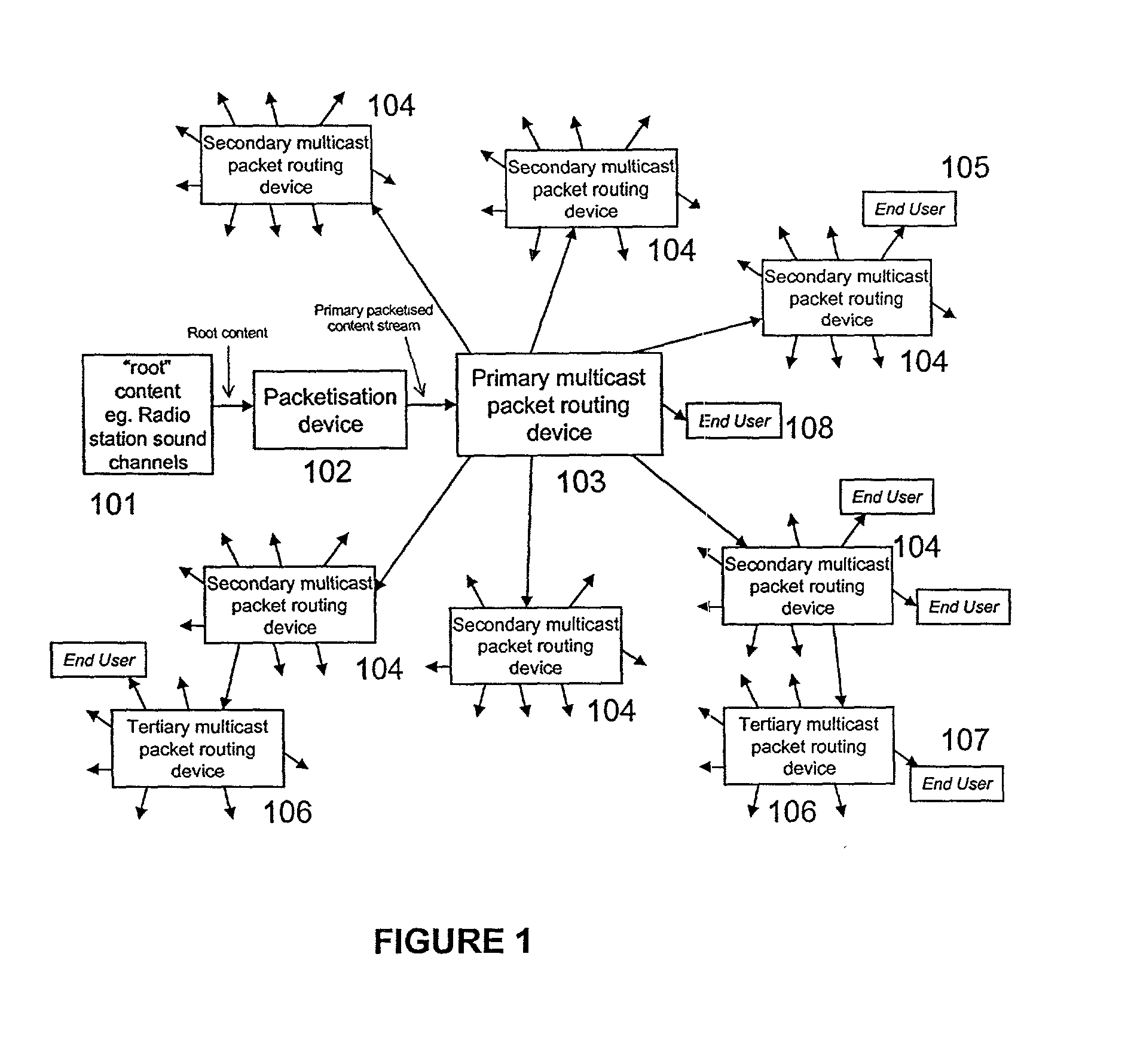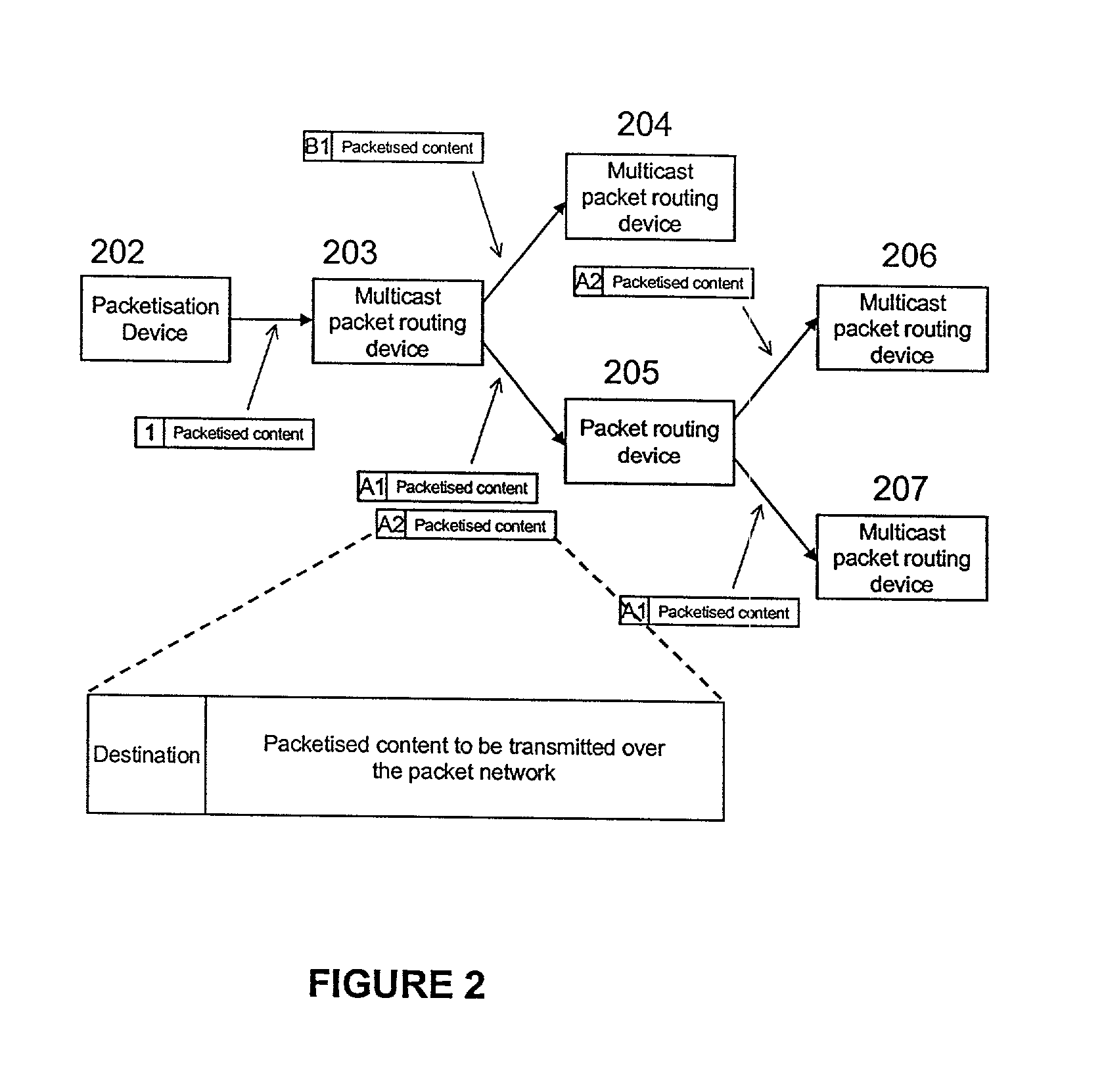Multicasting in IP distributive networks
- Summary
- Abstract
- Description
- Claims
- Application Information
AI Technical Summary
Benefits of technology
Problems solved by technology
Method used
Image
Examples
Embodiment Construction
[0018] Distributive packet network services have been being discussed and studied for a number of years. Examples of distributive packet network services include but are not limited to:
[0019] Video Broadcast: a pay television type service delivered using a packet network.
[0020] Audio Broadcast: similar to radio broadcast services but delivered using a packet network.
[0021] Near Video and Audio On Demand: similar to pay television or radio broadcasting but based upon a limited number of programmes which continually repeat. Multiple copies of the same programme are broadcast staggered at different starting times with a fixed starting interval between each instance of the programme. Viewers can join the transmission at any time and at most, must wait the starting interval until a new instance of the programme commences.
[0022] Information Broadcast: text based broadcast service delivered using a packet network. Key examples of such services are the various streaming stock market ticker ...
PUM
 Login to View More
Login to View More Abstract
Description
Claims
Application Information
 Login to View More
Login to View More - R&D
- Intellectual Property
- Life Sciences
- Materials
- Tech Scout
- Unparalleled Data Quality
- Higher Quality Content
- 60% Fewer Hallucinations
Browse by: Latest US Patents, China's latest patents, Technical Efficacy Thesaurus, Application Domain, Technology Topic, Popular Technical Reports.
© 2025 PatSnap. All rights reserved.Legal|Privacy policy|Modern Slavery Act Transparency Statement|Sitemap|About US| Contact US: help@patsnap.com



